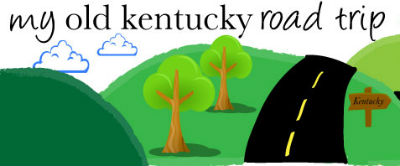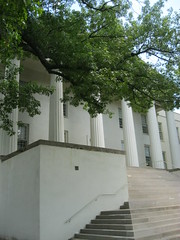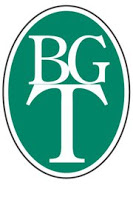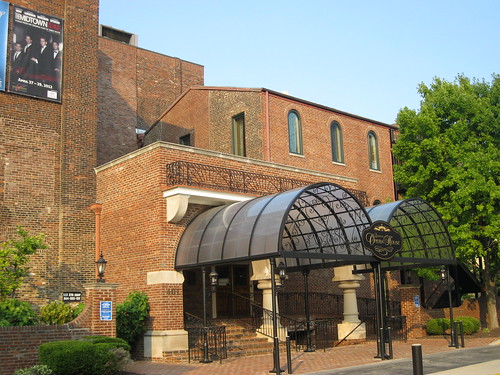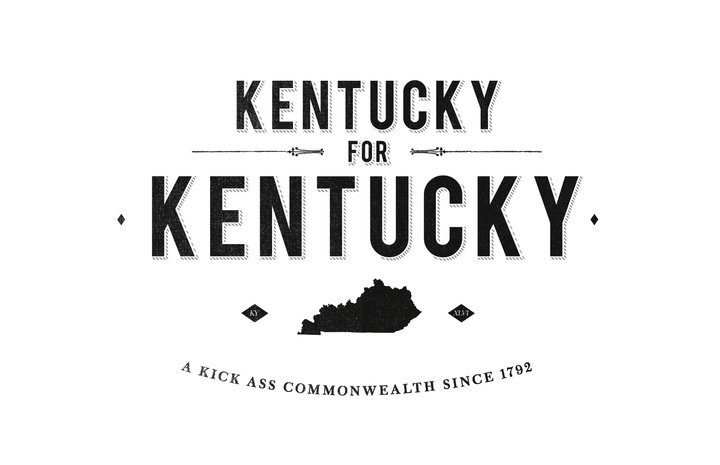After profiling Kentucky for Kentucky, I wanted to draw attention to another new Kentucky promoter. These gals take awesome road trips much like my No Destinations, though they tend to be a little more focused when they set out… Check out their Cameron and Blair’s recent treks to Maker’s Mark in Loretto and Waverly Hills Sanitarium in Louisville (both are places I’ve yet to see). Check them out @MyOldKYRoadtrip or at www.myoldkentuckyroadtrip.com!
Author: thekaintuckeean
NoD: Bluegrass Army Depot
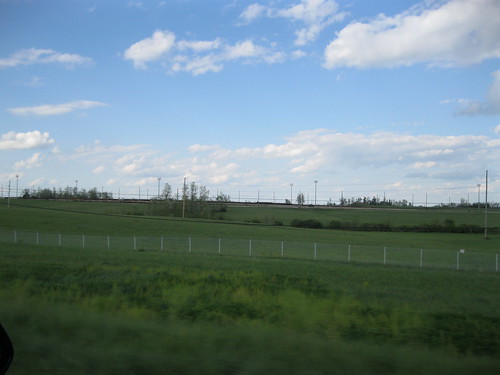 |
| Bluegrass Army Depot – |
Occasionally, it makes the news because of a gas leak or new attempts at environmental remediation. But the Bluegrass Army Depot, which is little known to most Kentuckians, occupies a massive, secretive 15,000 acre tract in Madison County.
The Blue Grass Ordnance Depot in Madison County was announced by Washington in the summer of 1941 and, by early 1942, the government was filing condemnation actions against landowners who did not sell their land through private sale. In October 1942, the facility began storage of its first munitions. Even after World War II, the BGOD remained a critical facility.
In 1964, the role of the Lexington Army Depot (fka Lexington Signal Depot) at Avon was deminished and its operations were merged into the Madison County facility which was then-renamed the Lexington-Bluegrass Army Depot. In 1992, army reorganization caused the name to again be changed to simply the Bluegrass Army Depot. The old Lexington depot was formally BRAC’d in 1995; it has been converted to a light industrial park “Bluegrass Station” near I-64 and KY-859.
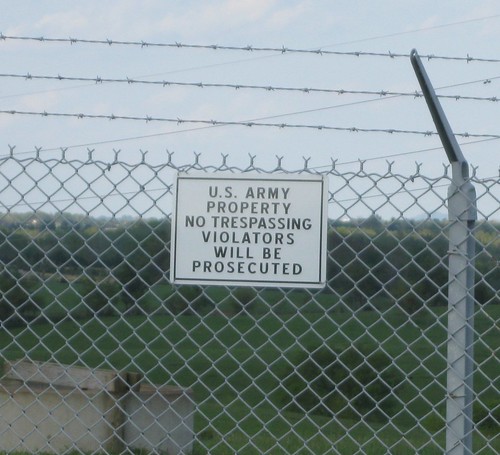 Since 1944, BGAD has housed about 2% of America’s chemical weapons stockpile. That’s right… near Richmond sits over 500 tons of VX, sarin, and mustard agent. A couple of leaks in the past decade have made some nearby residents understandably nervous; they await tornado-warning-like-sirens to notify them of the need for evacuation. Congress, however, has set a 2017 deadline to eliminate the stockpile in compliance with the Chemical Weapons Convention which has been agreed to by 65 countries.
Since 1944, BGAD has housed about 2% of America’s chemical weapons stockpile. That’s right… near Richmond sits over 500 tons of VX, sarin, and mustard agent. A couple of leaks in the past decade have made some nearby residents understandably nervous; they await tornado-warning-like-sirens to notify them of the need for evacuation. Congress, however, has set a 2017 deadline to eliminate the stockpile in compliance with the Chemical Weapons Convention which has been agreed to by 65 countries.
The military conducts other operations at BGAD as well, including military equipment design and (of course) storage. Other secretive operations are also rumored to exist on the sprawling facility: alien technology, UFOs, undisclosed stealth technology and more.
But from the road on a clear day, it seems to be just a beautiful verdant field behind “US Army Property – No Trespassing” fencing.
walkLEX: Centrepointe v. 4.0
I already told you about the meeting unveiling the new Centrepointe design. Today, I’ll show you.
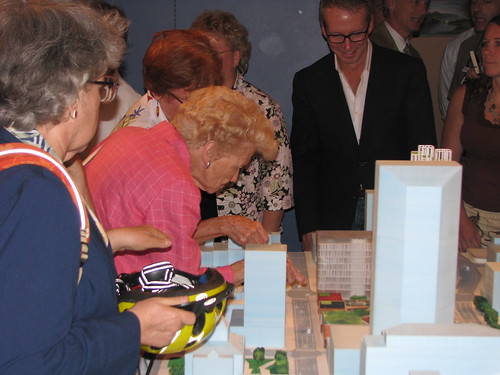 |
| Fmr Vice Mayor Isabel Yates examines the proposal |
 |
NRK and I discussed the project before the unveiling on Thursday. NRK declared his immediate reaction was dislike followed by the knowledge that I would love it. He was right. And I think that came through in yesterday morning’s post. NRK’s biggest criticism was that he didn’t feel that the project’s featured tower was “sufficiently Kentucky.” Gang discussed the poetic connection between Kentucky’s equine-based economy and the limestone soil that provides calcium-rich bluegrass for strong horses. With limestone as her inspiration, she discussed the stalactites and stalagmites of Mammoth Cave and the outcroppings of limestone along the Kentucky River Palisades before discussing the microbiology of marine life in the limestone – all of this pointed to the tubes which comprise the main feature of the project.
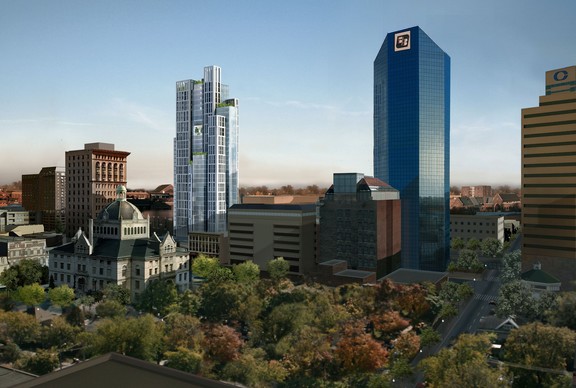 |
| Rendering of proposed project and Lexington skyline. Problem is, this picture is totally inaccurate (see below) |
One flaw in the Gang presentation was the use of the picture immediately above – it’s completely inaccurate! The view is from the northwest based on the positioning of the landmarks photographed. Which means that the verdant forest next to the old courthouse is where the Fifth Third Bank Pavilion is located (as well as Cheapside, etc.). Any other eagle eyes out there spot any other mistakes?
Check out all my pictures from the presentation here on flickr.
kernel: Centrepointe update
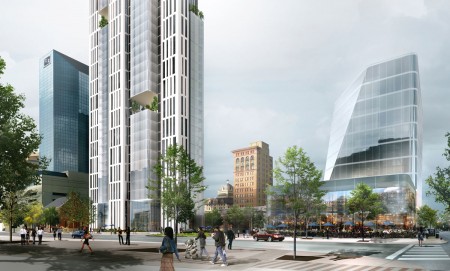 |
| Artist Rendering of the new “Centrepointe” Image: Studio Gang |
Bounded by Main-Upper-Vine-Limestone, the Centrepointe block in downtown Lexington has been a lightning rod since demolition plans were announced a few years ago. Much has been written about the various incarnations of the Centrepointe tower proposal.
kernel: Dog on Mailbox (Street Art)
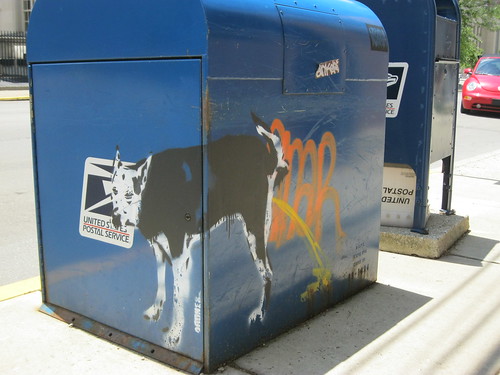 |
| Graffiti & Street Art on North Limestone – Lexington, Ky. |
I don’t know how to classify this – is it graffiti? Is it street art? Obviously, I’d classify the orange/yellow lettering as graffiti… but the dog urinating on the mailbox seems more like art (though, it being doubtful that the US Postal Service authorized the dog to permanently piss on its box, is it technically graffiti?). Either way, I thought it was funny.
UPDATE: A bit more was learned of the folk who make this graffiti/public art. They/he/she are Dronex. Check out another of their work here.
walkLEX: Old Morrison
 |
| Old Morrison (Transylvania University) – Lexington, Ky. |
R. Owens Williams is the President of Transylvania University, but Old Morrison is its face. Mention Transylvania University to those familiar with this great institution, and it will conjure up an image of this impressive building with its six massive Doric columns rising above the northern end of Gratz Park. Or at least it should… it is, after all, Transy’s logo.
Designed by Gideon Shryock and constructed from 1831-1834, it is the oldest building on campus that is in its original location (the caveat being necessary because of the Patterson Cabin which came to Transy in 1939). Shryock, of Lexington, had recently completed his work on the state capitol in Frankfort when Henry Clay, a member of the school’s board of trustees, sought his services to construct a main building for the college.
This brick building, covered in concrete, is three stories in height and serves as the University’s administrative building. Over time, it has also housed a chapel, classrooms and, during the Civil War, acted as a hospital for both Union and Confederate troops. There are even two bodies lying forever in the crypt at Morrison – Constantine Rafinesque and Saveur Francois Bonfils.
A fire in 1969 gutted Old Morrison, which was renovated, restored and rededicated on May 9, 1971. It was added to the National Register in 1966. Though his words are over 100 years old, they still are true. Burris Jenkins, president of then-Transy from 1901 to 1906 said that “Morrison is the purest, simplest piece of architecture in the state of Kentucky and the citizens of Lexington would part with any other building in the Bluegrass rather than part with the majestic Doric Morrison College.”
Bibliography
Gratz Park Neighborhood Association
NRHP, “Old Morrison“
Transylvania University, “Transy Campus“
This post was republished by KYForward.com on August 11, 2011.
walkLEX: Lexington Opera House
The Bluegrass Trust for Historic Preservation hosts a monthly deTour to a local historic site that has been well-preserved and restored. Please join us on our next deTour – details on Facebook! You can also help us plan the September deTour by voting here! Our guides for the Opera House deTour were Opera House program director, Luanne Franklin, and technical director, Michael Lavin.
Celebrating its 125th anniversary this year, the Lexington Opera House has a colorful past and a bright future. During its life, it has gone through a number of acts. In 1886, a fire destroyed the old opera house – seated at the southeast corner of Main and Broadway – and the following month a corporation was formed to raise funds for the present Opera House. What opened the following year was later described by the Lexington Leader as the “costliest, handsomest and most convenient Thespian temples in the South, an object of cherished pride in the city.” Designed with both safety and comfort in mind, the Opera House pumped cold water from a nearby ice factory to cool the temperature of the orchestra level and the two balconies.
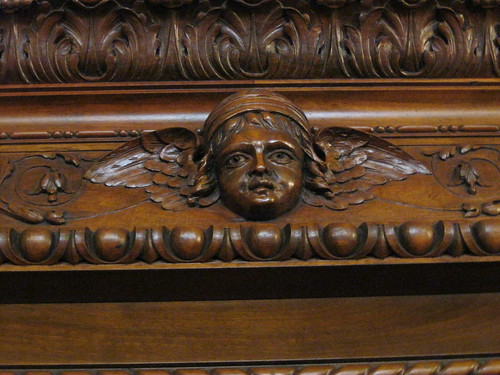 |
| (clockwise, from top). Exterior from Short Street; Exterior from North Broadway; Carved Putto over the main door into the theatre hearkens prosperity; the orchestra and two balconies. |
Over time, the tastes of arts patrons changed and the Opera House adapted. It operated as a vaudeville house and as a movie house. Ultimately, the boxes were boarded up (those on the orchestra level never would return) and a false ceiling was installed hiding the second balcony (in days of segregation, the remaining balcony was for blacks only). And then the pornos hit the big screen. Over time, the building (and arguably the quality of the programming) deteriorated and, in 1968, that false ceiling collapsed.
A fortuitous event, really, because it reminded urban renewal activists of the Opera House’s grandeur. The site was included in a proposed revitalization of downtown that, through the Lexington Center Corporation, would include the construction of Rupp Arena and the Civic Center. In 1973, the fate of the Opera House was sealed. A storm ripped open the roof to reveal a building determined by engineers to be structurally sound. It would cost $2.5 million to repair the Opera House (as opposed to a proposed $7 million new facility). As with all projects, the renovation costs went over-budget, but a number of Lexingtonians stepped up to make the Opera House grand again.
Garvice Kincaid donated a Baccarat crystal chandelier that hangs inside the North Broadway entrance; it originally hung in a chateau in the south of France. Sylvia Ross took a remnant of the decaying golden ornamental design that creates beauty throughout the Opera House and, with 6 tons of plaster, created all of the ornamental plaster work you see today!
The Opera House is truly a unique gem for Lexington. With only 866 seats, it is one of the smallest venue to host the Broadway LIVE series (now in its 35th year). It is one of only fourteen theaters in the United States constructed prior to 1900 seating fewer than 1,000 people that survives today. Great stars have appeared on the stage and the stage itself has been both flooded and iced for different performances.
Our tour guide, program director Luanne Franklin, would be disappointed if I did not mention the Opera House Fund. Since the mid-1970s, it has raised over $4 million to support the local arts community and to continue to bring quality programming, like Broadway LIVE, to Lexington. As discussion continues on the future of Rupp Arena and a new arena, we must not forget about our arts venues. Some of this discussion contemplates a new basketball venue and converting the existing arena into a larger performing arts center; Lexington needs a venue of this size and it would be a complement, not a detriment, to the continued success of the Opera House.
The original 1886 door between the Opera House lobby and the theater remains in place. The door and its frame were carved in France, and the framework features a putto who has and continues to hearken prosperity for this Lexington institution.
You can view all of my pictures from the Opera House here.
Bibliography
Lexington Opera House, “Our History“
Lexington newspapers via local.lexpublib.org
National Register, “Opera House“
Notes, deTour 7/6/2011
kernel: Kentucky for Kentucky
Check it out on Facebook and see a lot of Kentucky and how awesome it is. KY4KY is kick ass and they have a killer logo.
NoD: The Owings House
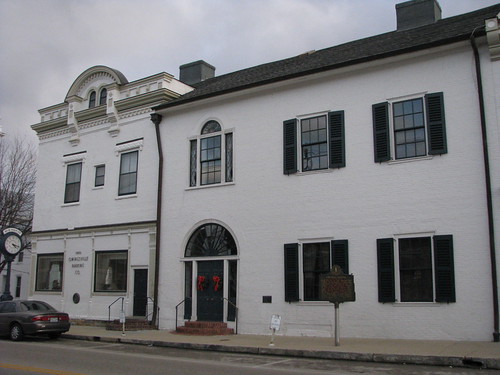 |
| The Owings House – Owingsville, Ky. |
The lore surrounding the Owings House in downtown Owingsville is epic.
In 1795, Colonel Thomas Dye Owings was sent from Maryland to Kentucky by his father to operate some of the first iron furnaces in the region. Within fifteen years, Owings had amassed a good deal of wealth and land. Along with Colonel Richard H. Menefee, Owings would found the community that took his name, Owingsville.
Owings and Menefee each owned significant parcels of land in what would become Owingsville. To select whose name the community would take, the two men wagered that the man who built the finer home the quickest would be the namesake of the town. For the sum of $60,000, Owings won the contest. (Menefee, a good politician and acclaimed orator – the “Patrick Henry of the West” – died a pauper, his greatest legacy being a Kentucky county which bears his misspelled name).
Although there is no concrete evidence, it is widely believed that the Maryland native retained Washington, D.C. architect Benjamin Latrobe to design the Owings House. Some features of the property remind the writer of Latrobe’s work, including the Palladian window over the front door and the spiral staircase inside. In fact, the staircase was constructed in Baltimore and was carried overland by oxen before it was assembled and installed. The staircase alone was $10,000! The Owings House was completed in 1814 and soon was one of the destinations for Kentucky’s political elite.
Another guest of the house, from July 17, 1814 through July 22, 1815, was the exiled Louis Philippe of France (King from 1830 – 1848). This, too, is disputed as some believe that the houseguest was an imposter posing as the young Frenchman. It is true, however, that Louis Philippe was in Kentucky decades earlier when he lodged at Bardstown’s Talbott Tavern.
During the War of 1812, Owings raised a Kentucky regiment and was commissioned a colonel in the 28th U.S. Infantry. He also served in politics, as sheriff and as a judge. Ultimately, Owings’ business success faltered and he declared bankruptcy before leaving for Texas where he would serve first for Stephen Austin in Texas’ War of Independence before serving the U.S. in the Mexican War. Colonel Owings died and is buried in Texas.
In 1905, the east third of the Owings House was modified and adapted for use as a bank, the Owingsville Banking Company, which remains in operation today. All five bays pictured were part of Owings’ original home which bested Menefee in competition.
Bibliography
Bath County Tourism
National Register of Historic Places.
“Thomas Dye Owings” by W. T. Block
Happy Birthday, America!
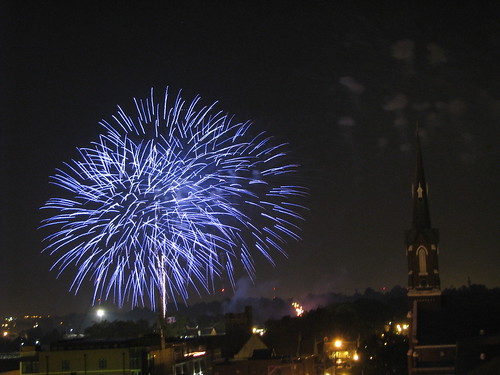 |
| Fourth of July Fireworks, 2010 – Lexington, Ky. |
I am taking the holiday weekend off to celebrate Our Independence from the tyranny of George III. There are a bunch of great things going on throughout the state – so celebrate. If you are in Lexington, I’ll probably be there to because they really know how to celebrate the Fourth of July!

